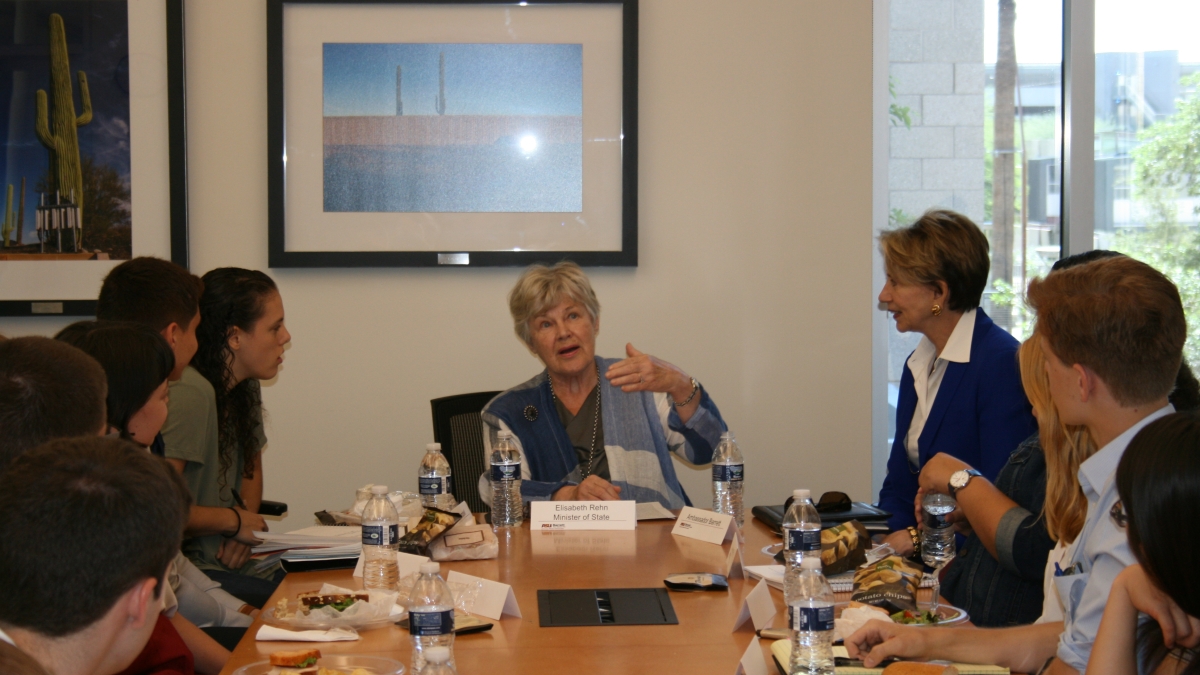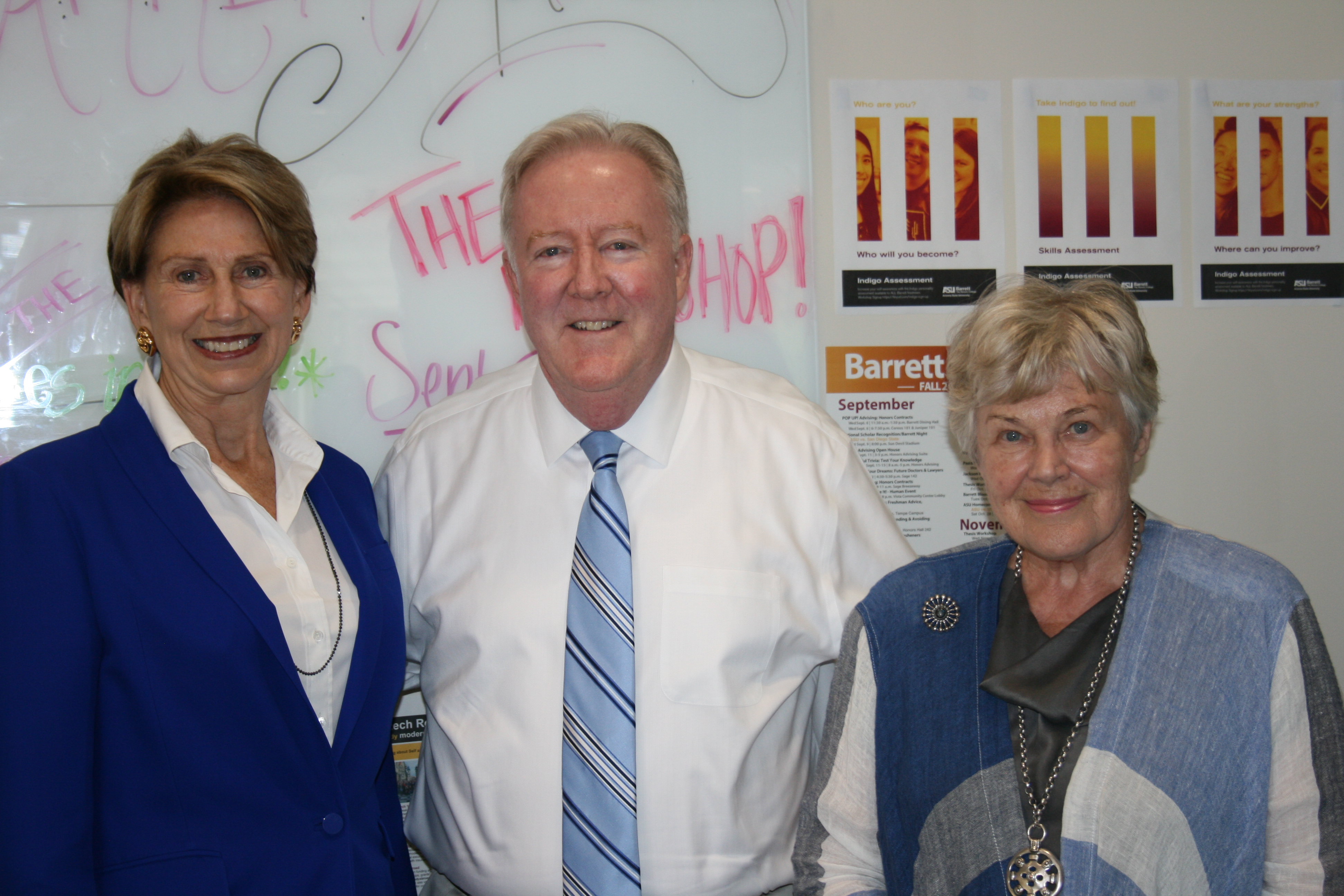In the week marked by Angela Merkel’s historic re-election as chancellor of Germany, another woman of global political prominence called on more women to take their seat at the table.
Elisabeth Rehn, the first woman to hold the title of minister of defense in Finland and in Europe (1990-1995), has now also become the first guest speaker for the new Global Fellow Program through Barrett, The Honors College at Arizona State University.
Announced in May 2017 — along with a $2 million gift from the college's namesakes Ambassador Barbara Barrett and her husband, Craig Barrett — the Global Fellow Program offers honors students access to international leaders visiting the ASU campus, international study trips and a curriculum designed to expose students to major global issues.
Rehn met with honors students during a lunch meet-and-greet at the college's Tempe complex Wednesday, following enthusiastic introductions from Mark Jacobs, dean of the college, and Barbara Barrett.
(From left) Ambassador Barbara Barrett; Barrett, The Honors College Dean Mark Jacobs; Former Minister of Defense for Finland Elisabeth Rehn.
Offering illustrations of Rehn’s character and recognition as a global leader, Barrett introduced the visiting foreign leader as fearless yet mild-spoken and self-deprecating — attributes Rehn herself said were key to the popularity and success she has experienced in the male-dominated world of international politics.
An anecdote offered testimony to Rehn’s sharp wit and resilience: She shared a story about deploying her sense of humor to deflect what she described as a “silly” question during one of her first press conferences as minister of defense.
“You know in Finland we have a culture of sauna. Men are sitting in the sauna and making the decisions,” Rehn said during her visit with the honors students.
So, when a journalist asked her how she was going to cope with the generals in the sauna in her new role, Rehn said she shot back with the response: “I normally like to make my decisions with all my clothes on.”
In the wide-ranging discussion that also touched on some of the more serious challenges she experienced in her simultaneous roles as Finland’s minister of defense and minister for gender equality, Rehn emphasized the need for more gender balance in matters of mediation and peacekeeping on the world stage.
Rehn, 82, also ran for the presidency of the Republic of Finland in 1994, narrowly losing to Martti Ahtisaari. She later went on to serve as the undersecretary general of the United Nations during Kofi Annan’s tenure as UN secretary general. Her work has taken her to some of the most conflict-ridden areas of the world including Bosnia-Herzegovina, Kosovo, Serbia, East Timor, Namibia and Colombia.
Rehn is also the co-author of the UN report “Women, War, Peace” with Liberia President Ellen Johnson Sirleaf. Among other international affiliations, Rehn is currently a member of the Global Leadership Foundation, which is composed of former world ministers and heads of state including the organization's chair, former President of South Africa F.W. de Klerk.
Rehn's visit was the first of what is hoped to be many interactions between students and world leaders at Barrett, The Honors College through the Global Fellow Program and Barrett Global Initiatives.
More Local, national and global affairs

First-ever Taiwan Symposium at Thunderbird celebrates business, cultural connections
The investment by TSMC and other Taiwanese corporations in Arizona will reap dividends not only in thousands of new jobs but also in strengthened cultural connections and new methods of…

Study shows that trust drives successful market economies — but not in the way you may think
From fueling our cars to fulfilling daily coffee habits, the average U.S. cardholder makes 251 credit card transactions per year, according to Capital One.Each of these transactions are built…

Higher education key to US competitiveness, security
ASU President Michael Crow’s notion of universities as public service institutions — places that serve society in practical and meaningful ways to solve pressing issues of importance to the country…



